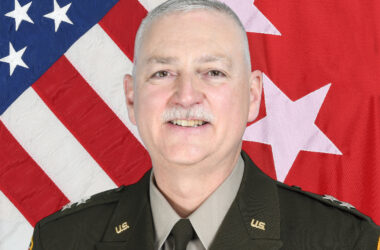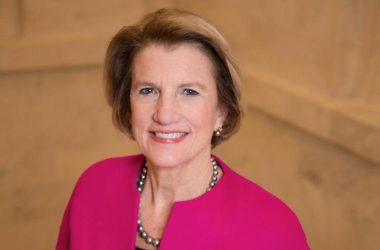By Charles McElwee
Creative thinking defined is a way of looking at problems or situations from a fresh perspective that suggests unorthodox solutions. That describes what is taking place at the Health Sciences Center at WVU under the leadership of Clay Marsh, MD, Vice President of the University, Executive Dean of the Center, and Professor of Medicine.

Recognized as a national leader in personalized medicine, Dr. Marsh has concentrated his efforts in determining how to help individuals stay healthy through research focused on defining underlying mechanisms that determine health and disease.
Apropos the definition, Dr. Marsh has recently and publicly identified a problem in expenditures by the public for health care, noting that “1 percent of patients accounts for 24 percent of the health care dollar. The least-healthy 5 percent of patients use 50 percent of health care dollars, and the least healthy 20 percent of us use 80 percent of the health dollars.”
With his research interests focusing on understanding the underlying mechanisms that determine health, Dr. Marsh became intrigued with the question of why a minority of the population were the heaviest users of health care dollars. That caused him to develop a fresh perspective for examining the issue that could possibly result in suggesting unorthodox solutions, the very essences of “creative thinking.”
Dr. Marsh’s fresh perspective, based upon his belief that society has a role in helping people to stay healthy, is that health outcomes of different persons may, at least in significant part, be attributed to their “mindsets,” meaning fixed states of mind, about “how [they] live their lives as humans and how [they] see [their] lives.” Accordingly, he hypothesized that the “mindset” of the heavy users of health care by a minority of the population must be changed—as he put it, “Change mindset and change health.”
The change of “mindset,” in his view from how the minority of the population “live” and “see” their lives, means a reorientation of their minds towards one of “abundance and love,” an attitude that “all is possible” with abounding “trust,” the belief that they “deserve great and abundant lives,” accompanied by a reduction in “prolonged stress” and “traumas,” and an increase in “resilience.”
For those who are inclined to believe that attitudes and behavior of humans are largely unmalleable and cannot be influenced or controlled because wills to do so are not free to resolutely change through our conscious minds what our unconscious minds don’t want to be changed, say from a liberal to a conservative in politics or from an agnostic to one of religious faith, may well be skeptical that “mindsets” can be changed as Dr. Marsh envisions.
But then those persons so described are most likely not familiar with developing unorthodox means for possibly molding or altering “mindsets” as are known by Dr. Marsh, so much so that he is endeavoring to recruit to WVU world leaders in neuroplascicity and virtual reality.
It is time for an admission on my part. I, unlike many lay persons, had never heard of the term “neuroplascicity” before first hearing of it from Dr. Marsh. I went to work immediately “googling.” I quickly learned that “placicity” means “capacity for being “molded or altered,” which, on its face, is an antonym of “mindset.” If something can be “molded or altered,” it is not “set.”
Add “neuro” as a prefix to “plascicity” and what we have is a word that says the central nervous system, comprising the brain and spinal cord, can be “molded or altered.” That implies that the mind is not set after all, which tends to rebut my hypothesis in the third preceding paragraph.
While I understand that the term “neuroplascicity” may be most often used in molding the brain to compensate for disease or injury, it is broad enough to encompass the molding of the brain to “change mindset and change health.”
I gather from my reading that endeavors to alter the brain to “change health” would require personal determination and resoluteness over time. If that is so, then that may involve overcoming another “mindset,” and raises the question of whether determination and resoluteness can be scaled up and sustained to alter the “mindset” of a significant percentage of the population.
As earlier stated, Dr. Marsh, in addition to endeavoring to recruit renowned specialists in neuroplascicity to WVU, is also seeking recognized leaders in virtual reality. As I had no idea what neuroplascicity meant, much less how the term may relate to mindsets, I was also similarly ignorant of the term “virtual reality.”
As happenstance would have it, the Sunday, February 4, issue of the Book Review section (p.11) of The New York Times reviewed two books on the subject of “virtual reality”: Jason Lanier’s Dawn of the New Everything Encounters With Reality, and Jeremy Bailenson’s Experience on Demand What Virtual Reality Is, How It Works, And What It Can Do. Two days later, on February 6, the Wall Street Journal reviewed the same two books.
I understand that the adjective “virtual” means “near”; thus,
“virtual reality” is “near reality.”
The WSJ review postulates that “VR seems poised to become a mass medium, [and the “larger question”] is where it will take us. Escapism, violence, propaganda—potential misuses abound. It could also foster empathy and provide a powerful new medium for storytelling.”
The WSJ review goes on to say, in quoting the author Bailenson, that “‘Virtual reality is going to become a must-have technology when you can simply talk and interact with other people…in a way that feels utterly and spectacularly normal.’”
Thus, Dr. Clay Marsh apparently has some confidence that “neuroplascicity” and “virtual reality” may provide unorthodox means of altering the “mindsets” of humans so as to change their health, and thus reduce the expenditures of health care dollars by a minority of the population. That is creative thinking.
The recruitment last November of Ali R. Rezai, MD, as Executive Chair and Director Rockefeller Neuroscience Institute and Associate Dean and Vice President, Neuroscience West Virginia University, makes the potential that Dr. Marsh has described a reality to be discovered. Dr. Rezai’s resume is one of the most impressive curriculum vitae I have ever read for any positon. WVU is preparing to become a national leader in the neurosciences and behavioral health. Dr. Rezai’s recruitment is creative action par excellence.
— McElwee is a Charleston lawyer. The views expressed are his own.





